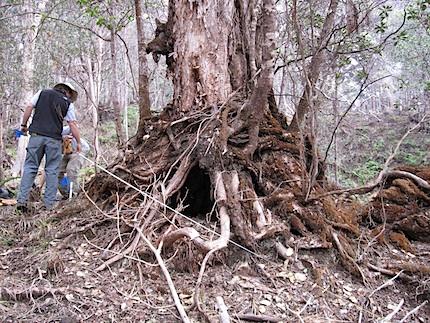Hawaii Volcanoes National Park officials have adopted an approach to rid the park of non-native ungulates that are exacting a toll on the park's vegetation and landscape.
The animals aren't entirely newcomers; some of the non-native species were introduced to the islands centuries ago, according to park staff. Polynesians introduced domestic pigs to the Island of Hawai‘i more than 1,000 years ago, and Captain James Cook brought goats to the islands in 1778, according to National Park Service records. "Axis deer were brought to the Hawaiian Islands from India in late 1867 as a gift to Kamehameha V," park records add.
Others arrived more recently -- mouflon sheep were introduced to the islands in 1957 -- while others were simply opportunistic; domestic cattle that wandered free and became feral from time to time find their way into the park
Unfortunately, these and other species threaten to damage archaeological sites, trample sensitive soils, and impact or wipe out species that are listed either by the state or federal governments as threatened or endangered. For instance, wallows created by feral pigs turn into breeding grounds for mosquitoes, which have transmitted avian diseases (avian malaria and avian pox) responsible for the loss of native birds. Pigs also have eaten both eggs and goslings of the endangered nēnē, or Hawaiian goose.
After studying the problem for more than a year, the park has received approval for a plan to remove the non-native ungulates, a plan that includes shooting many of the animals.
"The plan will provide a park-wide framework to systematically guide non-native ungulate management activities in a manner that supports long-term ecosystem protection, supports natural ecosystem recovery and provides desirable conditions for active ecosystem restoration, and supports protection and preservation of cultural resources," a park release said.
The NPS's preferred alternative "includes a progression of management phases, monitoring, and considerations for the use of management tools; a population objective of zero non-native ungulates, or as low as practicable, in managed areas; complete boundary fencing for Kahuku and 'Ōla'a rainforest; and potential use of localized internal fencing to assist in the control of non-native ungulates," it added.
You can find the entire plan at this site.


 Support Essential Coverage of Essential Places
Support Essential Coverage of Essential Places






